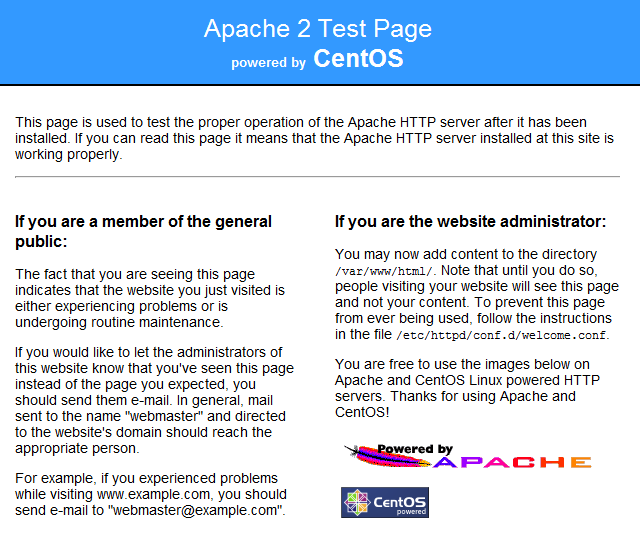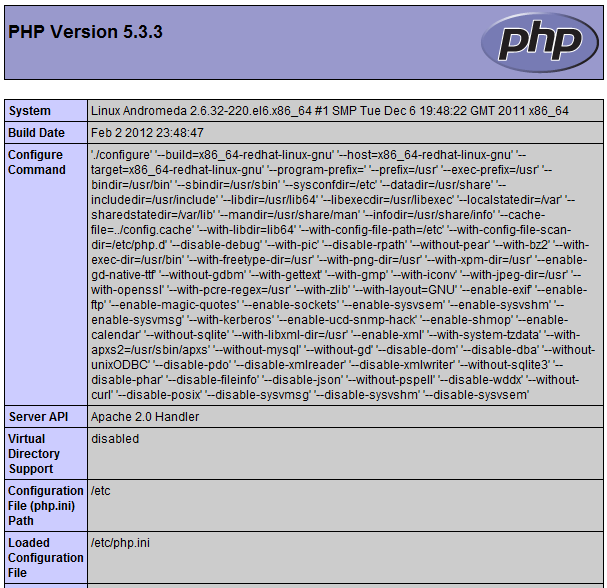How To install a CentOS 6 LAMP server, LAMP stands for Linux Apache MySQL & PHP and is often refereed to as a “LAMP Stack”. CentOS is a popular choice for web servers as it’s based on RHEL (Redhat Linux).
This guide assumes you have a working fully updated CentOS 6 system with root access, if not see our CentOS 6 Netinstall tutorial.
CentOS Apache Install via YUM
The first step is to install the Apache web server, RHEL based distributions call this package httpd not Apache. Often admins get this command wrong and type “yum install apache” or “yum install apache2” – the correct command to install Apache on CentOS is:
1
| |
Start Apache on CentOS:
1
| |
Add MySQL to start at boot type the following:
1
| |
CentOS MySQL install via YUM
Enter the following command to install CentOS MySQL Server and client via YUM:
1
| |
Start MySQL on CentOS type:
1
| |
Add MySQL to start at boot type the following:
1
| |
CentOS Install PHP & php-mysql via YUM
To install PHP and php-mysql (php-mysql is required so that PHP can talk to MySQL) on CentOS 6 type:
1
| |
FYI here is the full CentOS LAMP command (this will install Apache, MySQL & PHP all in one go):
1
| |
If you did everything right above you should see the CentOS test page if you browse to https://localhost (or your servers IP if you are on another box). If you don’t see a page below and it simply does not load chances are iptables is blocking httpd traffic you should configure iptables to allow httpd traffic however for now you may want to disable the CentOS firewall.
I would recommend creating a file called index.php in /var/www/html/ and adding the following code to it:
1
| |
This should give you an output similar to:
If you see the above output all is will and you can install your web apps or start building them, if you have any problems and need help please drop me a comment below.

